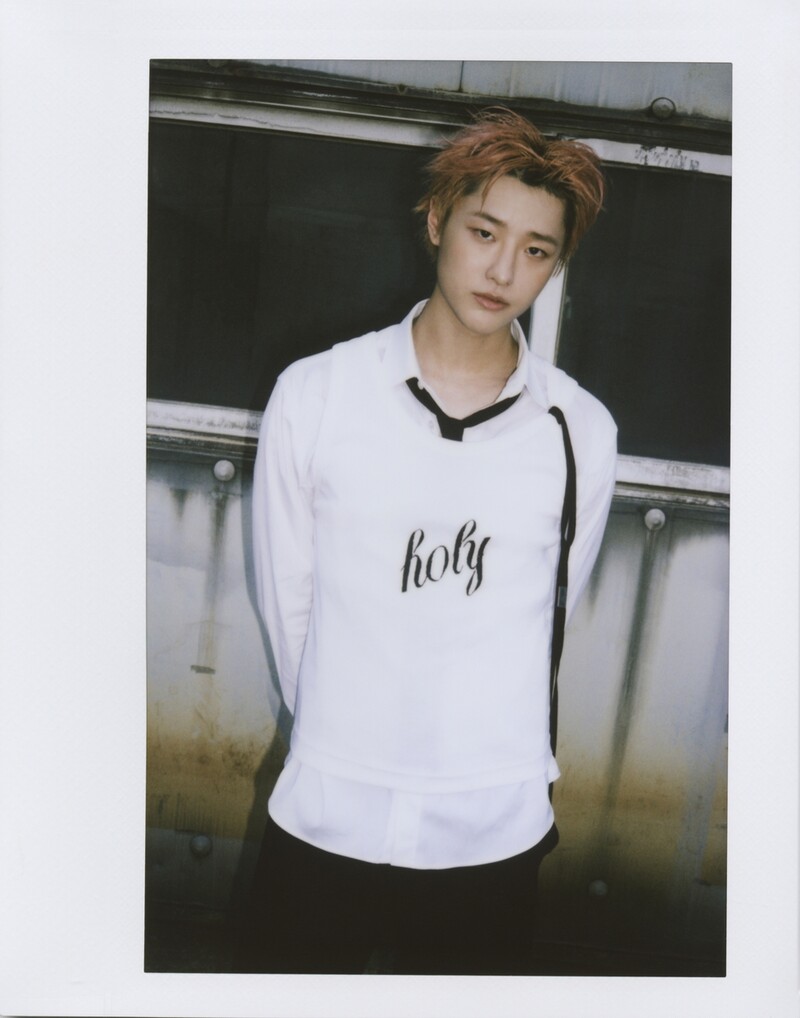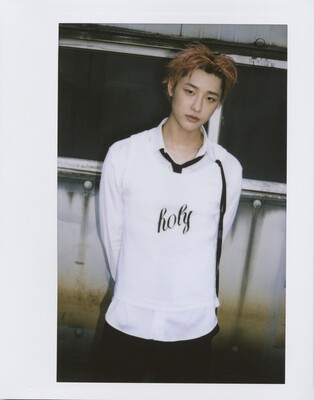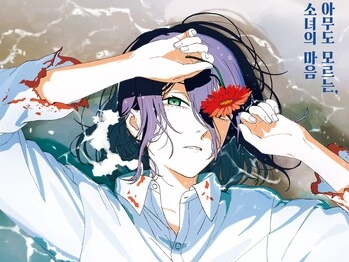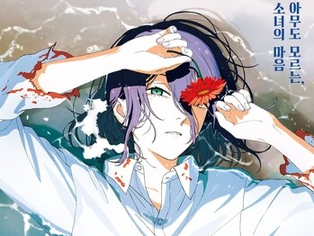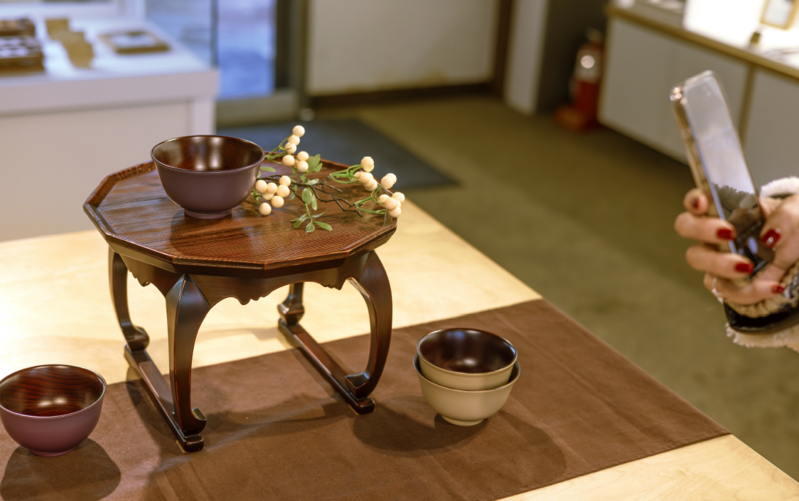 |
(The following article was translated into English by artificial intelligence.)
Jeonju, Jeollabuk-do, is designated as a 'UNESCO Creative City of Gastronomy'. The city systematically preserves and passes down its unique food culture by establishing and operating archives for Jeonju's food masters, famous houses, and landmarks. Furthermore, to uphold the excellence of Jeonju cuisine, seven masters, five famous houses, and two landmarks are designated.
I headed to Jeonju, imagining scenes of snow falling gently in the Hanok Village. I anticipated scenes like those from a fairy tale village, but unfortunately, luck was not on my side. Upon arriving at Hanok Village in Wansan-gu, the winter rain began to drizzle.
Nevertheless, the tiled roofs of the Hanok, dampened by the rain, drew lines as if they were about to fly away. That's the charm of Hanok. Each house connecting to the next forms beautiful lines throughout Hanok Village.
To escape the rain, I hurried into a tea house. Dawon, which has been introducing tea produced in the region for decades in Hanok Village. It's a small old house tucked away in a narrow alley off the main road of the complex Hanok Village. Facing each other across the courtyard are the main building and the annex, both about a hundred years old. Even before Hanok Village became a tourist attraction, this place has been used as a tea house. On rainy days, the old house has a unique charm. Passing through the front door, I could see rainwater dripping from the eaves. It was refreshing both visually and audibly. Upon entering, I saw the smoke from the incense drawing lines as it wafted through the air. Another discovery of lines.
The low wooden tables and thick cushions were quite charming. They directly harvest and process tea grown on the slopes of Moak Mountain. They kindly explain the process of brewing tea and even offer hands-on experiences. I ordered their popular menu, Hwangcha (yellow tea), and Yanggaeng (sweet rice cake). The sight of the traditional brassware, like those seen in the countryside, placed on the edges, added to the quaint atmosphere. Along with the drizzling sound of rain, I could smell the rich aroma of Hwangcha.
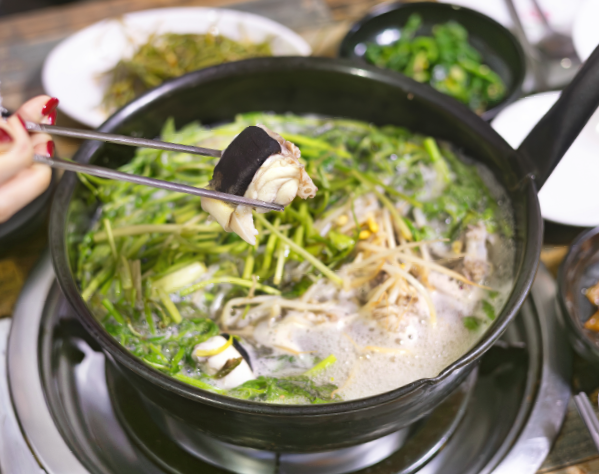 |
On bitter cold days, there's nothing like hot blowfish soup.
On bitterly cold winter days, there's an irresistible craving for hot blowfish soup. As you slurp the hot soup and warm yourself by the fire, the cold seems to melt away, and your frozen body begins to thaw. I stepped into a blowfish specialty restaurant in Wansan-gu, which opened its doors in 1976. In front of the restaurant, there's a plaque stating 'UNESCO Creative Gastronomy Establishment', indicating its excellence in serving authentic local blowfish cuisine. The broth, filled with lots of water parsley and bean sprouts, is simply divine. Even though I didn't order it, they delivered a bowl of blowfish egg soup called "goni". The owner kindly reminded me to use a spoon instead of chopsticks, saying, "If you use chopsticks, it might break."
Another must-try menu at this restaurant is the shredded beef soup (siraegi haejangguk). It's a well-known story in the area that after tasting this soup, the cartoonist Hur Young-man, known for "Backpacking," praised it highly. However, it's said that after that broadcast, the restaurant declined further interviews, as the influx of tourists caused inconvenience to their regular customers. The hangover soup is served from 7:30 in the morning until 11 a.m.
Another essential item not to be missed is moju. Moju is a local alcoholic beverage unique to Jeonbuk. Many people from Jeonju visit this place for hangover relief. Moju has a very low alcohol content, almost to the point where it doesn't feel like alcohol. With its tangy cinnamon aroma, it feels more like drinking herbal tea. One regular customer explained, "After drinking alcohol the night before, I come here, have a glass of moju, and relieve my hangover."
Medicinal Bibimbap and Palbok Art Park
A restaurant located in Palbok-dong, a bit away from the city center, is famous for its medicinal bibimbap. It's a traditional Jeonju bibimbap with added medicinal ingredients like jujube and bellflower. The owner, Kim Jeong-ok, designated as a 'UNESCO Creative Master of Gastronomy', has been developing traditional bibimbap here since 1988. The well-seasoned beef tartare combined with medicinal herbs creates a smooth and fresh taste. Interestingly, they also sell 'hongsi kimchi'. Although curious, I postponed trying it for another time, as I had to visit the nearby Palbok Art Factory.
The Palbok Art Factory, which used to produce cassette tapes in the early 1990s, has been reborn as a cultural arts platform. It's divided into two buildings: A, with indoor and outdoor exhibitions and a café, and B, with Dreaming Art Land and a multipurpose outdoor square. Stepping into the café, you'll see a huge doll resembling those seen in the drama "Squid Game". The giant doll, towering under the high ceiling, stimulates curiosity. In various exhibition spaces outside the café, you can experience relaxation, culture, art, and spend romantic moments.
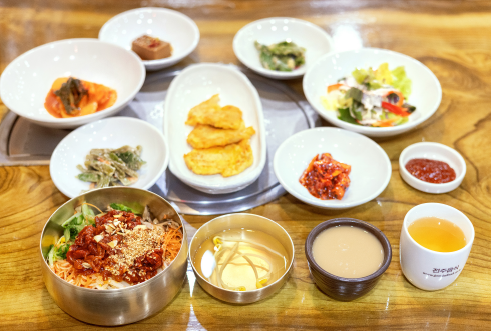 |
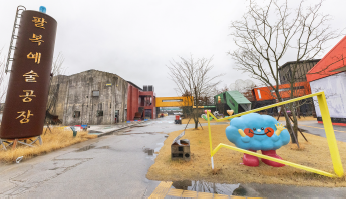 |
Savory Galbi BBQ
In addition to the famous 'muljjajang' (water black bean paste noodles), Jeonju is also known for 'mulgalbi' (water marinated ribs). A restaurant located in Namnosong-dong has been serving mulgalbi for 45 years. Mulgalbi is a rib stew with plenty of sweet potato noodles and crunchy bean sprouts. Underneath the noodles and bean sprouts lie marinated ribs. It's fun to cook them over the fire while adjusting the heat. As they cook through, the broth becomes more flavorful, and the slightly chewy noodles and bean sprouts blend perfectly with the rib flavor. Starting with the bean sprouts and noodles gives a refreshing and deep taste that you can't experience with regular ribs.
This place also offers a seafood mulgalbi, where seafood and bean sprouts are added to pork ribs. The combination of pork ribs and refreshing seafood broth attracts many regulars. There's also kimchi stew cooked with well-fermented old kimchi.
Harmony of Tradition and Modernity: Jeonju Bread
At Pungnyeon Bakery in the heart of Hanok Village, I could taste their bestseller, Jeonbyung (literally "Jeonju bread"). Despite Jeonju's pride in its traditional food, the pride in Western food, namely bread, is also remarkable. Among Jeonju's foods, bread has firmly secured its place. This bakery, which has been around for three generations, was founded in 1940 by the owner who learned bread making at a Japanese bakery during the Japanese occupation. It wasn't until the Korean War in 1951 that the bakery, which used to sell only Jeonbyung without a sign, took on its current appearance. In addition to Jeonbyung, another well-known item is handmade chocolate pie. While traditional Jeonju cuisine doesn't include bread, I found an interesting bread here. Recently, the popular "10 Won Bread" from Gyeongju, Gyeongsangbuk-do, has also landed in Jeonju. It's a bread shaped like a 10-won coin, providing both visual and gustatory pleasure.
Next to the bakery is the Jeonju Craft Exhibition Hall operated by Jeonju City. Here, I found a unique wooden tray. Despite its small size, about 30cm in diameter, its lacquered surface looked incredibly luxurious. It's a work of art by Bak Gang-yong, a designated intangible cultural asset of Jeonbuk. It was the perfect size for placing a pair of traditional pottery bottles and cups, which are intangible cultural assets of Anshiseong in Jeollabuk-do. Kim Beom-seok, team leader of Jeonbuk Culture and Tourism Foundation, said, "Jeonju has developed not only in gastronomy but also in crafts for food preservation," and added, "Shopping tourism, which combines gastronomy and shopping, will be activated.
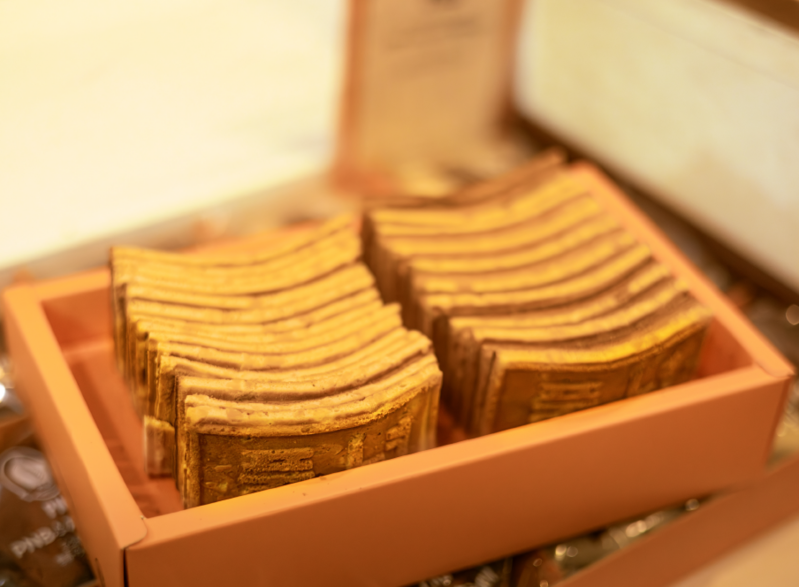 |
(C) Yonhap News Agency. All Rights Reserved


















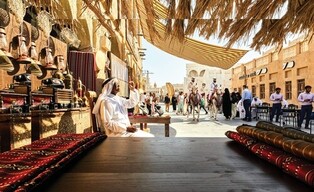



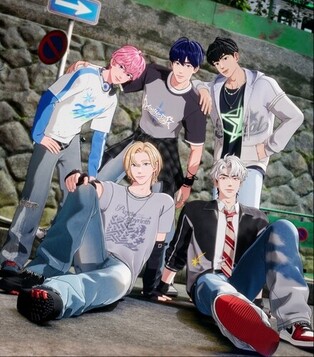

![[가요소식] 보이넥스트도어, 신보로 3연속 밀리언셀러 달성](/news/data/20251025/yna1065624915905018_166_h2.jpg)
